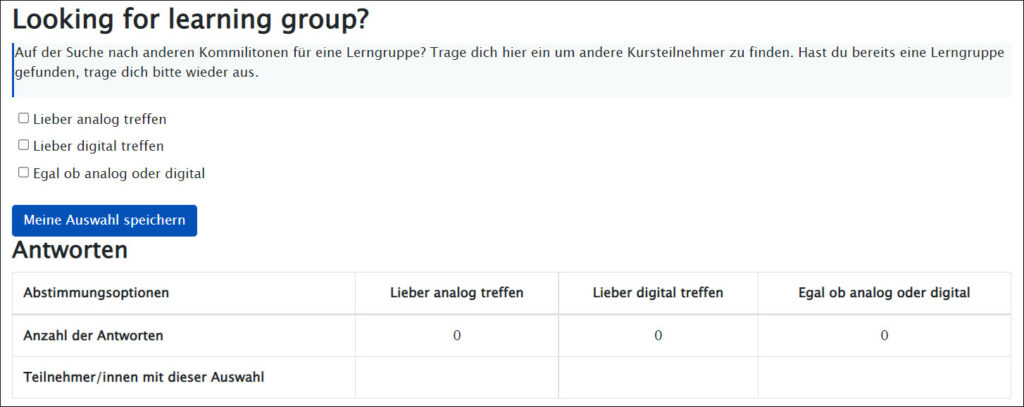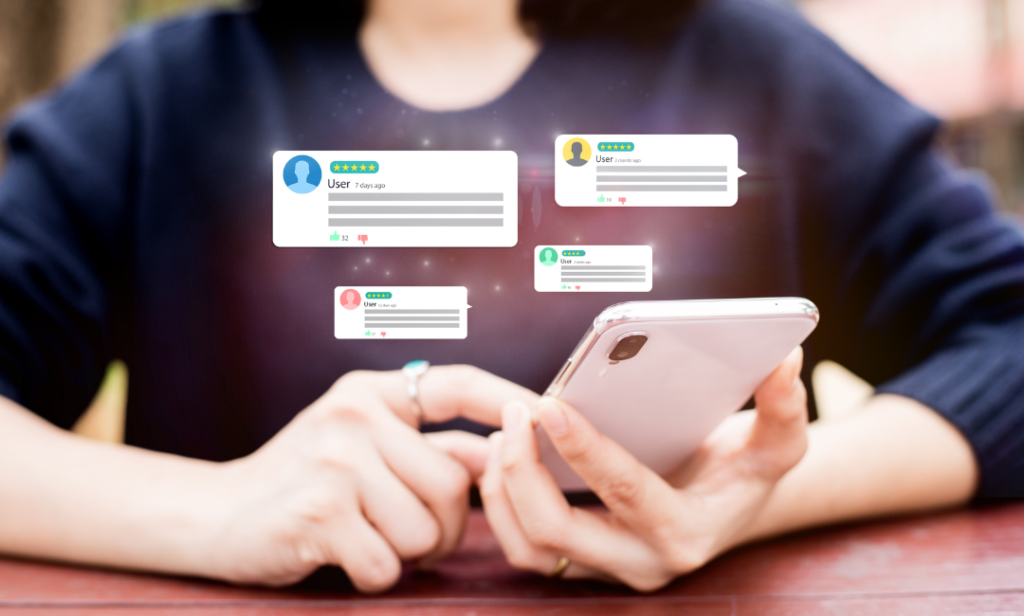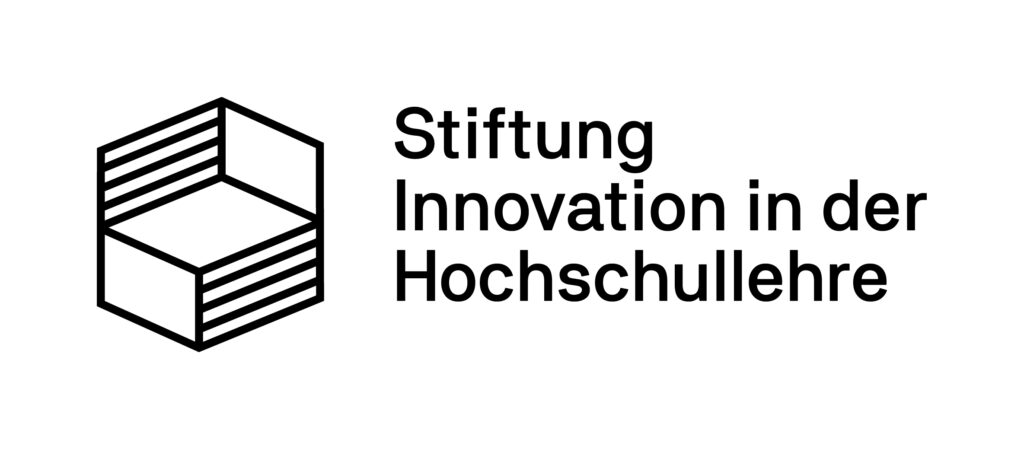If it was not obvious before, it definitely became so during the COVID-19 pandemic: social relatedness is an important element in teaching at university. Practical examples from the project “Supporting self-learning phases in lectures virtually and interactively (SelVi@ur)” show how this can also be achieved in digital learning environments.
Social relatedness is a basic human need (Deci & Ryan, 1993). Being interconnected and feeling socially integrated as a result are essential to most people’s well-being. This social relatedness is also highly significant when it comes to the context of teaching and learning. Students are more motivated when they experience themselves as being part of a learning community. Social relationships foster people’s intrinsic motivation and thus have a positive effect on learning behaviour (Pelikan et al., 2021).
Courses that are taught digitally represent a particular challenge with regard to students’ social integration. As no one is actually physically present, lecturers face the challenge of achieving the relatedness of their students in this specific context.
Social presence, social space and social interaction
Three aspects in particular play a core role in fostering social integration (Weidlich & Bastiaens, 2019): social presence, social space and social interaction.
- In communication situations, the other person is perceived as being socially present if they feel “real” even if they are not actually physically present.
- Social space refers to students sensing a feeling of community, which is connected to a favourable learning atmosphere.
- Social interaction is the process of communicating and exchanging messages in the learning environment.
All three aspects can also be achieved in digital learning environments with relatively little effort with the aid of the established learning management systems (like Moodle, for example). Four examples developed by lecturers at the University of Regensburg during the project “Supporting self-learning phases in lectures virtually and interactively (SelVi@ur)” show how this can work.
Meet your Lecturer
It is in the digital context especially that lecturers are often perceived as not being very present. Therefore, it is here in particular that it is all the more important for them to give the students the feeling that they are approachable as a person as well. Information on personal availability, such as contact details and office hours, for example, can be saved in the digital environment with no effort and is therefore always accessible.
Furthermore, lecturers seem approachable when they reveal information about themselves or their personal connection to the topic as well. This can be done by means of a podcast or short video in which they introduce themselves, for example.
Podcast
Podcasts have become increasingly popular over the last few years. All you need to produce one is a smartphone. The complete audio file is then simply stored in the learning environment. Lecturers can convey to the students the path their career has taken, their own interest in the course topic and personal information with the aid of their own voice, and can do so in a way that is very individual.
Prof. Dr. Ute Leimgruber introduces herself to the students attending her lecture entitled Einführung in die Pastoraltheolgie (Introduction to Pastoral Theology) in a podcast, in which she is interviewed by Sister Philippa Haase, a member of the SelVi project team.

This example clearly shows that a podcast is very practical for not only saying hello but for enabling people to hear your own enthusiasm for the subject in a lively way. This means that students can get their very own impression of the lecturer’s profile.
Video
A welcome video is also a lively way for lecturers to introduce themselves to the students in a digital teaching context. The advantage of a video is that it conveys a person’s voice as well as their gestures and facial expressions. That way, a lecturer can be experienced in their “entirety” and seems more socially present as a person.
Prof. Dr. Alexander Tischbirek introduces himself to the students attending his lecture entitled Verwaltungsrecht (Administrative Law) by a way of a short video.
The video was made in cooperation with Jana Simmel, a member of the SelVi project team. They both took the conscious decision to record it in front of the faculty building so as to create a virtual connection to the real-life learning environment.
The welcome video could also be added to further so as to introduce the team members (such as research and student assistants, secretaries, etc.), for example.
Enabling social interaction between students
In addition to the lecturers introducing themselves, what is also important for the students’ social integration is the contact and interaction between the students themselves. Lecturers can foster this in various ways.
Looking for Learning Group?
During a course, the interaction between students can be fostered by them being given tasks which have to be done in groups (e.g. preparing a presentation or exam questions, working on exercises, etc.). The established learning management systems offer various tools so that the students can organise themselves into work groups on their own.
As part of the lecture “Physik I für Chemie und LA mit Unterrichtsfach Physik (Physics I for chemistry and teacher training students with physics as a subject) ”, the “Assignments” activity is used in the online course accompanying the lecture in order to organise study groups (see Figure 1).

Jonas Neumayer, a member of the SelVi project team, has arranged the tool so that the students can form study groups themselves using Moodle. Here, the form also allows you to decide on the form you want the meeting to take (analogue, digital, whatever).
Peer Feedback
The explicit request for the students to give each other feedback also contributes to social interaction. Learning processes and social interaction can be combined very easily by means of peer feedback. The following example comes from the course “Physik für Biologen und Biochemiker (Physics for biologists and biochemists)” and was developed by Philip Lechner, a member of the SelVi project team.
At the start of the semester, the students sign up for peer feedback groups voluntarily. The feedback needs to be appropriately well designed in order to have a positive effect on the learning process. What comprises good feedback is therefore clarified at the beginning. For this purpose, the students are given a one-page document called “Feedback” containing both basic information and a checklist for good feedback.

The students then give each other feedback on one of the tasks on the weekly exercise sheets, using a forum integrated in the Moodle course. This forum can only be accessed by the members of the respective group. The member of the project team gives the students continuous assistance with formulating central questions for the peer feedback.
When designing digital learning environments, lecturers have numerous options for facilitating their students’ social integration so that they feel connected to their lecturers and fellow students.
What options have you already tried out with regard to fostering your students’ social relatedness in digital learning environments? Can you recommend any tools that are easy to use? Please feel free to share your experiences on Twitter, Facebook or directly in the comment function.

The project “Supporting self-learning phases in lectures virtually and interactively (SelVi@ur)” is sponsored by Stiftung Innovation in der Hochschullehre (innovation in teaching at universities foundation).
References
Deci, E., & Ryan, R. M. (1993). Die Selbstbestimmungstheorie der Motivation und ihre Bedeutung für die Pädagogik. Zeitschrift für Pädagogik, 39(2), 223–238.
Pelikan, E. R., Korlat, S., Reiter, J., Holzer, J. Mayerhofer, M., Schober, B., Spiel, C., Hamzallari, O., Uka, A., Chen, J., Välimäki, M., Puharić, Z., Anusionwu, K. E., Okocha, A. N., Zabrodskaja, A., Salmela-Aro, K., Käser, U., Schultze-Krumbholz, A., Wachs, S., … Lüftenegger, M. (2021). Distance learning in higher education during COVID-19: The role of basic psychological needs and intrinsic motivation for persistence and procrastination–a multi-country study. PLoS ONE 16(10), Article e0257346. https://doi.org/10.1371/journal.pone.0257346
Weidlich, J., & Bastiaens, T. J. (2019). Designing sociable online learning environments and enhancing social presence: An affordance enrichment approach. Computers & Education, 142, Article 103622. https://doi.org/10.1016/j.compedu.2019.103622
Suggestion for citation of this blog post
Puppe, L. & Brandl, M. (2022, November 24). Wellbeing in digitalen Lernumgebungen. Lehrblick – ZHW Uni Regensburg. https://doi.org//10.5283/ZHW.20221124.EN

Dr. Linda Puppe
Dr. Linda Puppe is a research assistant at the Centre for University and Academic Teaching (ZHW) at the University of Regensburg. She focuses on the topics of innovation in teaching and motivation. Furthermore, she is interested in digital learning environments.

Michael Brandl
Dr. Michael Brandl is an educational theorist and was formerly a research assistant with Prof. Gruber and head of training and project management at various companies; he has been at the ZHW since September 2021. He is responsible for the organisational coordination on the SelVi@ur project.
-
Michael Brandl





